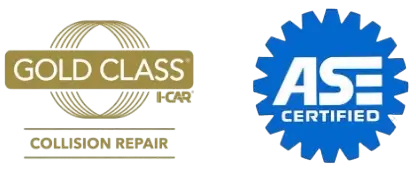Is My Car Safe To Drive After An Accident?
The sounds of scraping metal, screeching tires and breaking glass are enough to make anyone uneasy. Doubt, confusion, and anxiety all make your mind race with different scenarios and excuses, but panic does not do anyone any good. After a car accident, it is better to compose yourself and come to the situation more analytically. You need to follow proper steps for collecting information, but more importantly, you need to assess the damage to your vehicle to determine its drivability.
Safety Risks
For minor fender benders with no apparent damage, people assume it is safe to get back in their cars and drive off without concern. However, you should always inspect your vehicle to ensure that there are no obvious signs of critical damage. Even minor collisions can result in severe fluid leaks or damaged axles. Without knowing the age and existing problems, it is impossible to say what an accident can do. For older vehicles with established rust deposits, even a low-speed crash can cause significant damage to vital components. Newer vehicles also have safety technologies built-in for impact absorption that can alter other electrical parts. Before assuming your car is safe to drive, consider the warning signs and the fragility of your vehicle.
Warning Signs
Do you see smoke or steam rising from the engine compartment? Is the hood bent and contorted? Are the wheels aligned correctly? Giving your car a once over has the potential to save your life. As any good mechanic knows, the vehicle will show you when it is safe to drive. Steam or smoke can indicate vital leaks in hoses and other parts. You should never drive your car if you see smoke coming from any area after an accident. Also, if there is significant hood damage, assume that the vehicle is not safe to drive. If there are no clear indications of damage, consider asking someone with a more trained eye.
Police Inspection
Police officers receive training for responding to accident scenes. Their training focuses on more than identifying the cause and momentum of the accident. They learn how to inspect vehicles for damage, performing risk assessments to determine the drivability of a car. While you and the other accident victim may debate calling police to a minor accident scene, know that most insurers require a police report when filing a claim. Therefore, if you have any intention of using insurance funds to repair your car, you will need to contact the local police department for an accident report. Since the cops are already on the scene, go ahead and ask their professional opinion about the safety of your vehicle.
After Accident Checklist
While using the expertise of trained police officers is one of the best ways to determine the drivability of your car after an accident, you can also perform your own inspection. When assessing the damage to your vehicle, be sure to focus on at least five critical areas.
- Mirrors: The first area you need to focus on is the mirrors. Are your side and rearview mirrors intact? People often underestimate the necessity of mirrors in driving because the use of the devices becomes second-nature. The placement of mirrors prevent blind spots and ensures the safe maneuvering between lanes. If your mirrors are cracked or missing, consider calling a tow.
- Lamps: You also want to check on the functionality of your lamps. Do the headlights work as they should? Are your turn signals indicating correctly? What about your brake lights? While it may be daytime after your accident, other drivers still depend on your use of signals to inform your intentions. If your lamps are not working, you should not drive the car.
- Wheels: Look at all four of your wheels. Do they appear to be appropriately aligned? When turning the steering wheel, do the tires move in unison. You also want to check the tire pressure and look for any obvious signs of puncture. While you may not have a gauge on the scene, you should notice if one side of the car is sitting lower than the other.
- Hood: Look over your hood. Do you notice any significant dents or breaks? Make sure to check the hinges. Front end collisions can often result in substantial hood damage. If your vehicle was hit in the front, then consider having the car towed to the nearest auto body shop for a thorough inspection.
- Fluid: Finally, you should check the fluid levels in the engine. You should also look under the car for any signs of leaks. If you see no leaks and the levels seem right, turn on the engine. Always be cautious when starting an engine after a collision. Is there smoke or steam? If so, turn off the car and call for a tow. Also, if you are not comfortable turning on the ignition, then call a professional.
If you were in a car accident and would feel more comfortable having a professional inspect your car before you drive it, contact Tachoir Auto Body. With over 40 years in business, the repair technicians at Tachoir can get you up and running in no time.

